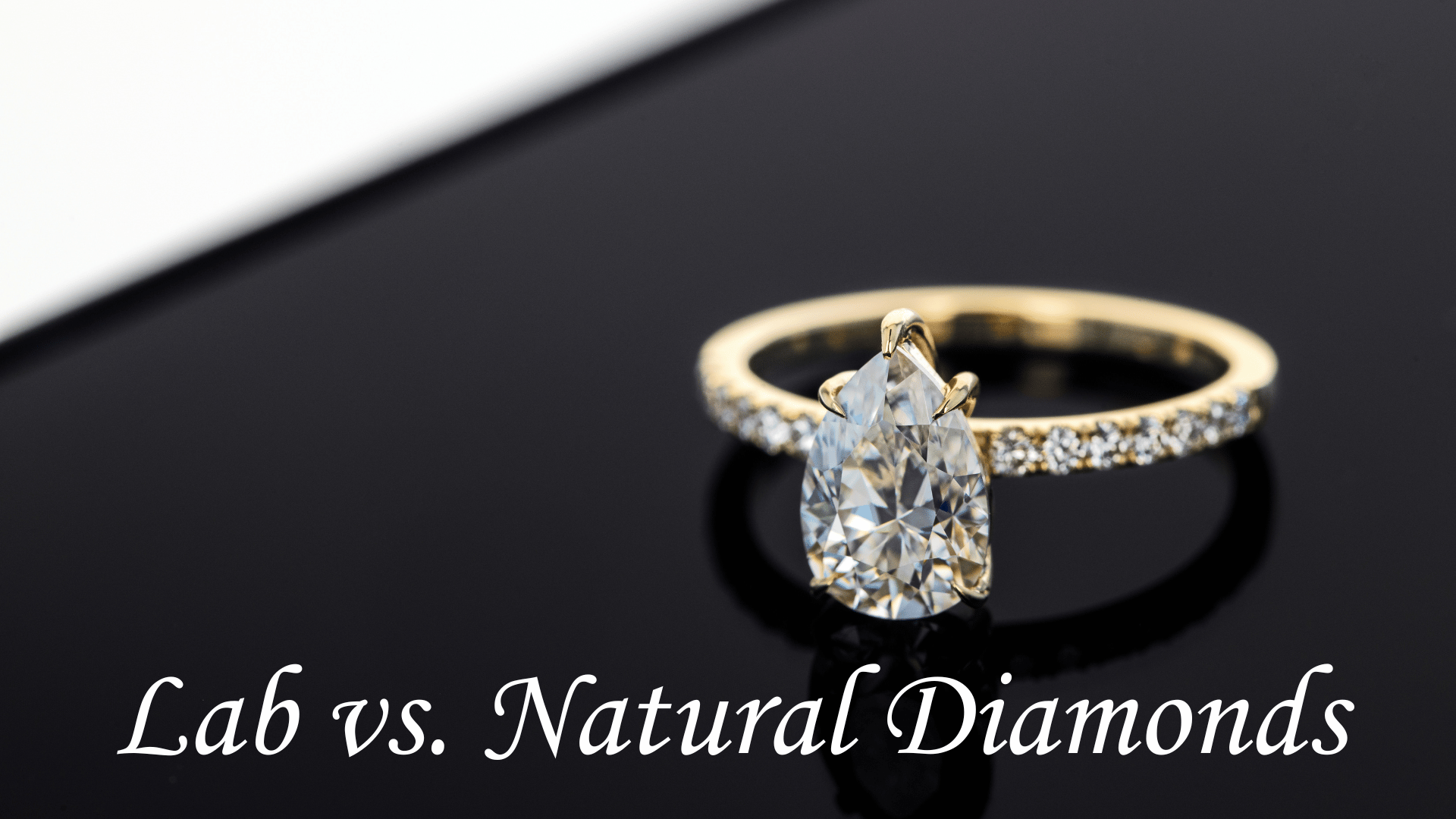Diamonds have historically represented richness, love, and lifelong commitment. Traditionally, these valuable stones were extracted from the soil using complex mining techniques. However, technological breakthroughs have resulted in modern alternatives, such as lab-grown diamonds. This trend has prompted discussion among customers, jewelers, and conservationists alike. If you're thinking about buying a diamond or choosing a diamond substitute, you should grasp the distinctions between the two. In this article, we'll look at their history, qualities, environmental effects, and cost to help you make an informed selection.
Origins and Creation Process
Natural Diamonds:
Natural diamonds form over billions of years deep under the Earth's mantle, under severe pressure and high temperatures. These diamonds are transported to the surface by volcanic eruptions and extracted from kimberlite and lamproite pipelines. Each natural diamond is a one-of-a-kind result of Earth's geological processes, making it a limited and valuable resource.
Lab-Grown Diamonds:
Lab-grown diamonds, often called synthetic or cultured diamonds, are manufactured in a controlled laboratory setting. There are two main ways for creating lab-grown diamonds:
- High Pressure, High heating (HPHT): This approach simulates natural diamond-forming circumstances by applying high pressure and heating to carbon.
- Chemical Vapor Deposition (CVD): This process involves ionizing a carbon-rich gas in a vacuum chamber, which causes carbon atoms to deposit and crystallize on a substrate.
Both technologies generate diamonds with chemical, physical, and visual properties equal to natural diamonds.
.png?width=1200&height=630&name=Lab%20vs.%20Natural%20Diamonds%20(5).png)
Characteristics and Quality
Appearance:
To the naked eye, lab-grown and natural diamonds appear to be the same. Both varieties show the same brightness, sparkle, and clarity. Advanced gemological equipment is necessary to tell the difference between the two. We at Kay's Fine Jewelry, keep these machines in each of our stores to detect natural vs. lab grown diamonds.
.png?width=1200&height=630&name=Lab%20vs.%20Natural%20Diamonds%20(3).png)
Durability:
Both have a Mohs hardness of 10, making them the hardest known substance while being equally durable.
.png?width=1200&height=630&name=Lab%20vs.%20Natural%20Diamonds%20(4).png)
Grading:
Both types of diamonds are graded using the four C's: carat, cut, color, and clarity. Diamond grading reports are provided by reputable gemological laboratories, including the Gemological Institute of America (GIA) and the International Gemological Institute (IGI).

Environmental Impact
Natural Diamonds:
Natural diamond mining has an environmental impact. It may require large quantities of water and electricity, which contributes to carbon emissions. However, many diamond mining firms are pursuing sustainable procedures and ethical sourcing to reduce these disadvantages.
Lab-Grown Diamonds:
In general, lab-grown diamonds have a lesser environmental footprint than natural diamonds. The industrial method uses less land and water. However, it is critical to consider the energy consumption of lab-grown diamond production, which might be significant depending on the energy source employed.
.png?width=1200&height=630&name=Lab%20vs.%20Natural%20Diamonds%20(2).png)
Ethical Considerations
Natural Diamonds:
The diamond business has come under fire throughout the years for concerns such as conflict diamonds. The Kimberley Process Certification Scheme was intended to stop the supply of conflict diamonds.
Lab-Grown Diamonds:
These lab-created stones provide ethical alternatives since they are free from the human rights problems that come with mining. Consumers looking for a more ethically produced gemstone frequently make these choices.

Cost
Natural Diamonds:
Natural diamonds are often more costly due to their scarcity and the lengthy mining procedure. Prices vary greatly depending on the diamond's size, quality, and origin.
Lab-Grown Diamonds:
Lab-grown diamonds are usually 50% less costly than their natural counterparts. Their lower cost makes them an appealing alternative for budget-conscious consumers looking for diamonds without the natural and rare price tag.
.png?width=1200&height=630&name=Lab%20vs.%20Natural%20Diamonds%20(1).png)
Conclusion
The decision between a natural diamond and a lab-grown diamond is ultimately based on personal choice, values, and budget. Lab-grown diamonds provide a much more inexpensive and sustainable option without sacrificing quality or look. On the other hand, real diamonds have a timeless charm, an investment value, and a distinct geological history that most people find attractive. Whatever you select, each of these alternatives may elegantly represent your love and dedication.
.png?width=626&height=329&name=Lab%20vs.%20Natural%20Diamonds%20The%20Ultimate%20Comparison%20-%20kfj%202024%20%20(1).png)
Kay's Fine Jewelry: Your Guide to Finding the Perfect Stone
At Kay's Fine Jewelry, we recognize that selecting the appropriate gemstone is a very personal decision. Whether you're drawn to the timeless beauty of real diamonds or the inventive appeal of lab-grown diamonds, we can assist. Our skilled staff will help you through the selection process, ensuring that you locate the ideal stone to meet your needs and budget.
Explore these links to learn more about diamonds and their alternatives:
Whether you pick a natural diamond or a lab-grown diamond, make sure you buy from a reputable jeweler and get certification to assure the quality and authenticity of your diamond. Happy jewelry shopping!
.png?width=150&height=150&name=Official%20Logo%20-2024%20(26).png)





.png?width=207&name=Official%20Logo%20-2024%20(40).png)